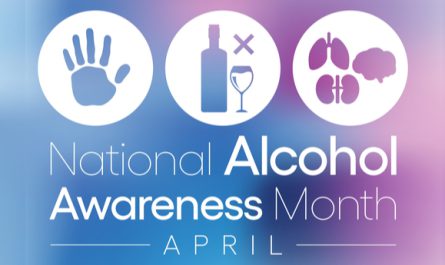BURSTING MYTHS ABOUT ANGER
Charles Spielberger defined anger as “An emotional state that ranges in intensity from slight annoyance to severe fury and rage.”
Anger is a coping mechanism that helps us to take quick action when we feel threatened or our aims are hindered, particularly in circumstances where there is little time to figure things out. It can inspire problem-solving, goal-accomplishment, and threat reduction. It provides protection and is not necessarily a problem (Lowth, 2018; Stosny, 2020; Zega, 2009).
These frequent misconceptions about anger, together with the supporting facts, will help you explain to your client why taking the time to learn how to control your anger is worthwhile.
Myth 1:”Anger is not a typical emotion.”
Anger is a typical feeling that everyone occasionally feels, much like enjoyment. Individuals who claim they don’t feel angry are typically misrepresenting their own feelings. Anger can manifest itself differently in various people. While introverts prefer to keep their emotions inside, extroverts might wish to express them. Although it’s acceptable to be angry, anger shouldn’t be directed at you or another person.
Myth 2: “Men are angrier than women.”
According to study, both sexes experience the same level of rage; they just display it differently. Males typically use aggressive methods and expressions, but women (who are frequently restricted culturally) choose to express themselves more subtly, like in the case of passive-aggressive tactics. This could include speaking ill of them or excluding them from your life in order to get revenge (categories adapted from: Therapist Aid LLC, 2016; Segal & Smith, 2018; Morin; Gallagher, 2001).
Myth 3: “Anger and aggressiveness are synonymous.”
Nope. An emotional state that is sensed is anger. Anger is not the same thing as aggression, which is a behavior that is occasionally displayed in response to it. Without turning to violence, threats, or other forms of hostility, one can still express anger in a healthy way. Aggression isn’t a given when someone is angry. In reality, according to some professionals, most everyday rage does not translate into aggressiveness. According to the, three interrelated components that all start with “I” may have a role in the emergence of aggression:
- Instigation, an occurrence that causes a want to lash out, such as being addressed harshly or discovering that one’s partner has had an affair.
- Impellance is defined as a force that enhances the desire to act in response to motivating stimuli. These might be powerful hormonal releases or a belief system that indicates the inciting event should not be tolerated, or even a societal standard that requires instigating stimuli to be responded to swiftly and severely.
- Inhibition, a term used to describe factors that often serve as a check on aggressiveness, such as social conventions, understanding of the potential repercussions, or empathy or perspective-taking (Kassinove & Tafrate, 2019).
Myth 4: “One shouldn’t” (either through venting or catharsis) since it’s healthier to release one’s anger than to keep it inside, according to this theory.”
That is accurate if by “keeping it in” someone wants to repress their anger; ignoring it won’t make it go away and suppressing it is not a wise course of action. Yet neither is complaining. Blowing out in a combative rage simply feeds the issue anger and makes it worse. The use of pillow-punching or other forms of catharsis is also inappropriate; this may come as a shock to therapists who were educated a few years ago, when catharsis was a well-respected method of managing anger. Even if we feel better right away after striking something, researchers have discovered that our brain observes and somewhat modifies its wiring as a result.The circuitry in the brain is more predisposed to a cathartic striking experience, and the voice of the furious brain is a bit louder. Instead of either angry venting or catharsis, anger management techniques should be used.
Myth 5: “Anger is a genetic trait.”
It’s possible for a client to assert that they are unable to change their father’s quick temper since they share it. This perspective suggests that the ways in which anger is expressed are predetermined, unchangeable behaviors. Yet, research indicates that how we express our anger can be learnt, so if we have, for example, learned to be violent in our emotions due to exposure to aggressive influential individuals, such as parents, we may also acquire healthier, more suitable, pro-social methods of coping with it.
Myth 6: “Some people aggravate other people.”
How frequently do we say things like, “He made me so furious!” or “You make me so angry I could murder you!” in everyday speech? Even if we occasionally mention persons who arouse emotions other than anger, these expressions regarding anger are heard much more frequently. We can choose to allow other people’s actions to make us happy, unhappy, or something else entirely, yet we frequently believe and express that anger is a direct result of other people. An angry individual might therefore justify bad behavior with the help of the undiscerning listener. Although it may have an impact on our behavior, ultimately it is not the other person’s behavior or even their purpose that makes us angry. Being specific, we must accept that the cause is our perception of their aim as indicated in their behavior or words.
Myth 7: “Anger, aggressiveness, and intimidation enable a person to command respect and obtain their objectives.”
Bullies may be feared, but people don’t appreciate those who can’t control their emotions or handle conflicting opinions. The best method to get (most) people to listen to you and meet your requirements is to communicate respectfully. The majority of people who seek counseling do so because they want to have healthy relationships, despite the fact that the fleeting power that comes with successful intimidation may feel intoxicating in the moment.
Myth 8: “Only a specific group of people are impacted by anger.”
Everyone can experience anger, which is a universal emotion. It does not prejudice anyone based on their age, nationality, race, ethnicity, socioeconomic situation, level of education, or religion. Those in the educated middle classes are tempted to think that the impoverished, the uneducated, or those deficient in social skills are more prone to wrath. This is not supported by reality, despite the fact that different social groupings exhibit rage in different ways. A person is not “good” or “evil” for feeling angry; anger is simply an emotion.
Myth 9: “By withholding what they are currently thinking, a person is being dishonest and will later get much more irate.”
When we’re upset, we feel compelled to “speak our minds.” But this is precisely the moment when a person’s judgment is seriously faulty. To talk out of rage is to give the impulsive side of the brain control over the analytical side. Better to wait till that rational part regains control until it affects relationships, careers, and pretty much everything else.
Myth 10: “Our minds are the only source of anger.”
Your body and intellect are both involved in anger. Consider the most recent occasion when you were very upset. Your face probably flushed, your hands probably shook, and your pulse rate probably went up. Due to the physiological reaction that anger elicits, which frequently feeds angry thoughts and violent actions. Reduced angry outbursts can be achieved by learning how to relax your body and mind.




